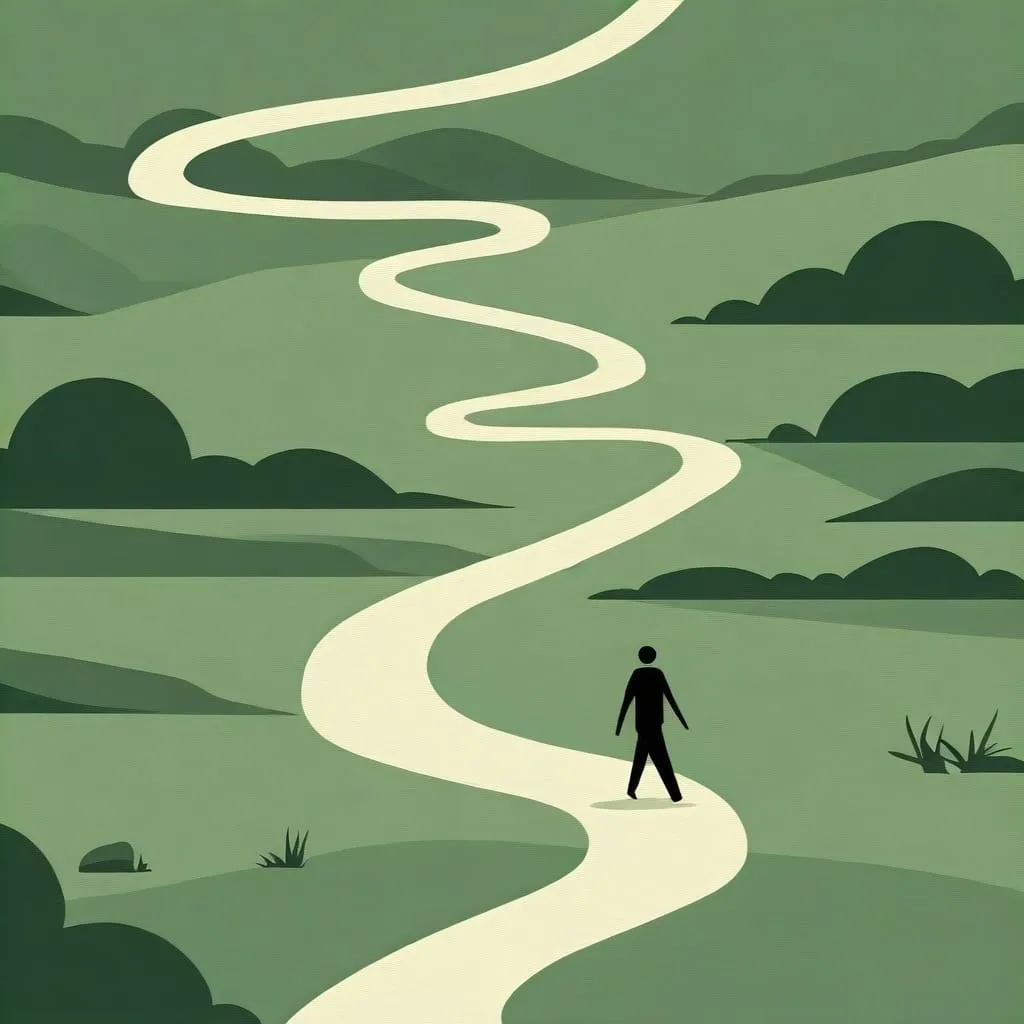Harnessing Your Natural Energy Cycles for Peak Productivity
We've all been there - staring at a to-do list, feeling overwhelmed and unsure where to start. The traditional approach of sticking to a rigid schedule often leaves us feeling drained and unproductive. But what if there was a better way? Enter the world of energy cycle management.
Instead of fighting against your body's natural rhythms, why not work with them? Your energy ebbs and flows throughout the day, and tapping into these cycles can revolutionize how you approach tasks and boost your productivity.
Let's dive into how you can make your energy cycles work for you.
Riding the Wave: Understanding Your Energy Patterns
Think of your day as a series of waves. You have high tides of energy where you're firing on all cylinders, and low tides where you might struggle to keep your eyes open. The trick is to recognize these patterns.
For some, mornings are a burst of creative energy. Others might find their groove in the afternoon or late at night. There's no one-size-fits-all approach here. It's all about getting to know your unique rhythm.
Try keeping a simple energy log for a week. Jot down when you feel most alert and when you're dragging. You might be surprised by what you discover!
Matching Tasks to Your Energy Levels
Once you've got a handle on your energy patterns, it's time to put that knowledge to work. The key is aligning your tasks with your energy levels.
During your high-energy periods, tackle the tough stuff. This is when you want to dive into complex projects, brainstorm new ideas, or take on challenging tasks that require your full attention.
For instance, if you're a writer and mornings are your peak, use that time to craft your most important pieces. Save the editing and proofreading for when your energy dips.
Low-energy periods are perfect for more routine tasks. This might be the time to catch up on emails, organize your workspace, or handle administrative duties. These tasks still need to get done, but they don't require the same level of focus and creativity.
The Yin and Yang of Daily Activities
Life isn't just about work, though. Your day is a mix of "need-to" and "want-to" activities. Need-to tasks are the ones with deadlines and responsibilities - your job, household chores, or important appointments. Want-to activities are the fun stuff - hobbies, socializing, or simply relaxing.
Here's where it gets interesting: these two types of activities feed into each other. Your need-to tasks often provide the resources (time, money) for your want-to activities. In turn, your want-to activities recharge your batteries, giving you the energy to tackle your responsibilities.
It's a beautiful cycle when you get it right. Maybe you power through a tough project at work, knowing that you've got a fun night out with friends to look forward to. That night out then recharges you for the next workday.
Crafting Your Energy-Based Schedule
Now that you understand your energy cycles and the interplay between different types of activities, it's time to put it all together.
Start by blocking out your high-energy periods for your most demanding tasks. Use a calendar app or a simple notebook - whatever works for you. Then, slot in your routine tasks for the low-energy periods.
Don't forget to schedule in those want-to activities! They're not just nice-to-haves; they're essential for maintaining your energy and motivation.
Remember, this isn't about creating a rigid schedule. It's about having a framework that allows you to work with your natural rhythms.
The Virtuous Cycle of Productivity
When you start aligning your tasks with your energy levels, something magical happens. You create a virtuous cycle of productivity and satisfaction.
Tackling tough tasks when you're at your best leads to better results. Those positive outcomes boost your mood and overall energy levels. This, in turn, fuels you for the next round of tasks.
It's like a snowball effect of productivity. Each success, no matter how small, builds momentum for the next one.
Rest and Recharge: The Unsung Hero of Productivity
In our go-go-go world, it's easy to forget the importance of rest. But here's the thing: rest isn't just nice to have; it's essential for maintaining your energy cycles.
Make sure to schedule in downtime. This could be a quick power nap, a meditation session, or even a full "think week" where you step back and recharge.
Don't feel guilty about taking breaks. They're not a sign of laziness; they're a crucial part of maintaining your productivity in the long run.
Delegation: Your Secret Weapon
Sometimes, despite your best efforts, you might find yourself swamped with low-energy tasks. This is where delegation comes in handy.
If you're in a position to do so, consider outsourcing or delegating tasks that don't align with your energy cycles. This frees you up to focus on the high-impact work that really needs your attention.
Building a support system - whether it's team members at work or family members at home - can be a game-changer in managing your energy and tasks.
Staying Flexible in an Unpredictable World
Life has a way of throwing curveballs. Your carefully planned schedule might go out the window due to an unexpected event or a sudden burst of inspiration.
The key is to stay flexible. If you suddenly find yourself energized during what's usually a low period, seize the moment! Switch gears and tackle a high-energy task you had planned for later.
This flexibility allows you to make the most of your energy, wherever it shows up.
Communicating Your Energy Cycle
If you work with others or have family commitments, it's important to communicate your energy-based schedule. Let people know when you're at your best for meetings or collaborative work.
This isn't about being difficult; it's about ensuring you can bring your A-game when it matters most. Most people will appreciate your honesty and self-awareness.
Beyond Daily Cycles: Long-Term Energy Management
While we've focused a lot on daily energy cycles, it's worth considering longer-term patterns too. You might have weekly, monthly, or even yearly cycles of high and low energy.
For example, you might find you're more creative in the summer months, or that you need more downtime in the winter. Understanding these broader patterns can help you plan big projects or important events more effectively.
The Power of Presence
One of the biggest benefits of working with your energy cycles is that it allows you to be more present in each moment. Instead of constantly worrying about what's next, you can focus fully on the task at hand.
When you're working on a high-energy task during your peak time, you're not distracted by low-priority items. You're in the zone, giving your best to what matters most.
This presence not only boosts your productivity but also enhances your overall satisfaction with your work and life.
Wrapping It Up: Your Energy, Your Way
Managing your day based on your energy cycles isn't about following a strict regimen. It's about understanding yourself better and working in harmony with your natural rhythms.
It might take some trial and error to find what works best for you. That's okay! The process of discovery is part of the journey.
Remember, the goal isn't to squeeze every last drop of productivity out of yourself. It's about finding a sustainable way to do your best work and live your best life.
So, why not give it a try? Start paying attention to your energy cycles. Experiment with scheduling tasks based on your energy levels. You might be surprised at how much more you can accomplish - and how much better you feel doing it.
Here's to riding your energy waves to success!






